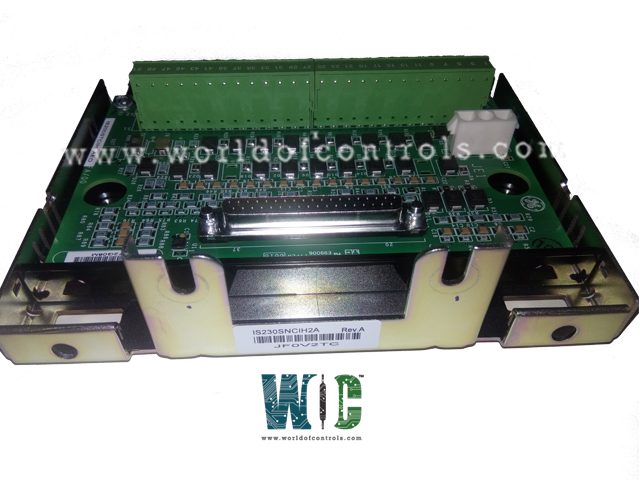
World Of Controls understands the criticality of your requirement and works towards reducing the lead time as much as possible.
IS230SNIAH2A - Isolated Analog DIN-Rail Module is available in stock which ships the same day.
IS230SNIAH2A - Isolated Analog DIN-Rail Module comes in UNUSED as well as REBUILT condition.
To avail our best deals for IS230SNIAH2A - Isolated Analog DIN-Rail Module, contact us and we will get back to you within 24 hours.
SPECIFICATIONS:
Part Number: IS230SNIAH2A
Manufacturer: General Electric
Series: Mark VIe
Product Type: Isolated Analog DIN-Rail Module
Number of channels: 16
Analog output current: 0-20 mA
Maximum Lead Resistance: 15Ω
Analog output current: 0-20 mA
Operating temperature: -30 to 65 °C
Size: 10.16 cm wide x 33.02 cm
Frequency: 50 or 60 Hz
Repair: 3-7 Day
Availability: In Stock
Weight: 2 lbs
Country of Origin: United States
FUNCTIONAL DESCRIPTION:
IS230SNIAH2A is an Isolated Analog DIN-Rail Module manufactured and designed by General Electric as part of the Mark VIe Series used in GE Distributed Turbine Control Systems. Isolated analog DIN-rail modules play a crucial role in turbine control systems within industrial settings. These modules serve to interface between the various sensors and actuators within the turbine system and the central control unit. In turbine control systems, analog signals are often generated by sensors measuring parameters such as temperature, pressure, flow rates, and vibration levels. These analog signals need to be conditioned, amplified, and sometimes converted into different formats before they can be accurately processed by the control unit. The isolated analog DIN-rail modules provide several key functions in turbine control systems:
WOC has the largest stock of GE Distributed Turbine Control System Replacement Parts. We can also repair your faulty boards. WORLD OF CONTROLS can also supply unused and rebuilt backed-up with a warranty. Our team of experts is available round the clock to support your OEM needs. Our team of experts at WOC is happy to assist you with any of your automation requirements. For pricing and availability on any parts and repairs, kindly get in touch with our team by phone or email.
What types of signals can isolated analog DIN-rail modules handle?
These modules can handle various analog signals, including voltage, current, temperature, pressure, flow rates, and more, depending on the specific application requirements.
How do isolated analog DIN-rail modules mount in industrial setups?
These modules are designed to be mounted on standard DIN rails commonly found in industrial control cabinets or panels, allowing for easy installation and integration into existing systems.
What are the key features to consider when selecting an isolated analog DIN-rail module?
Important features to consider include electrical isolation, input/output voltage/current ranges, signal conditioning capabilities, accuracy, temperature stability, certifications, and compatibility with industrial protocols.